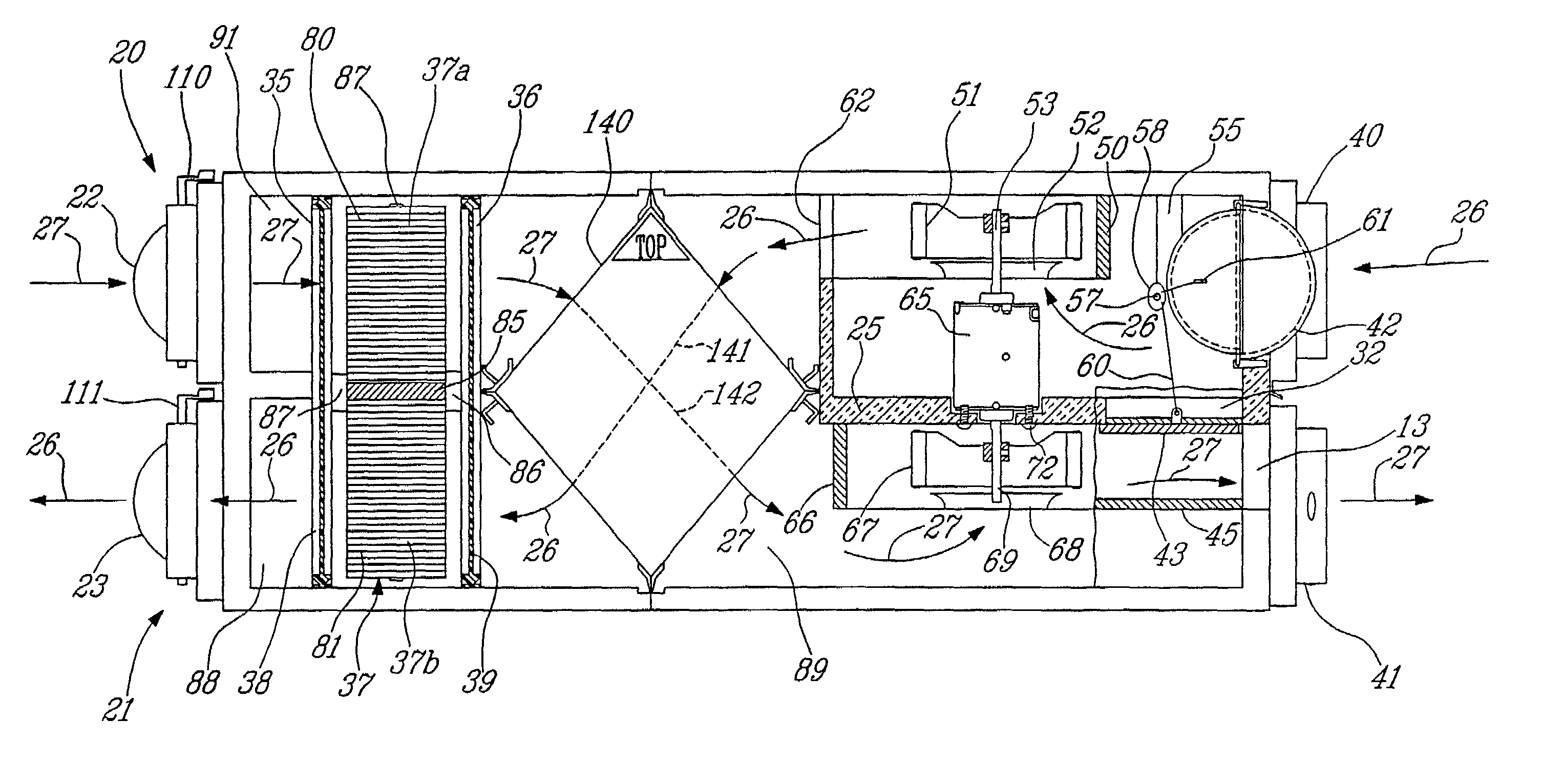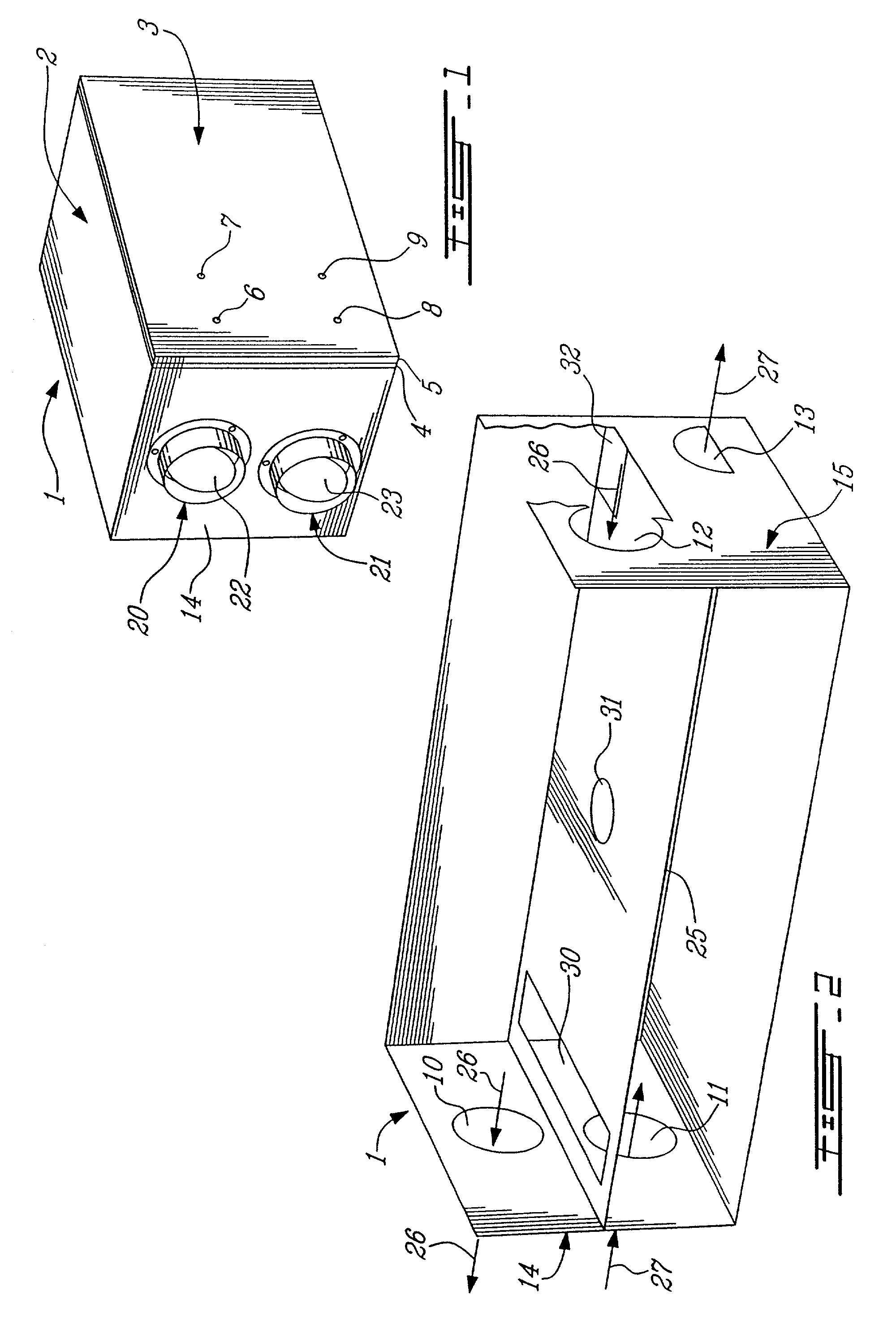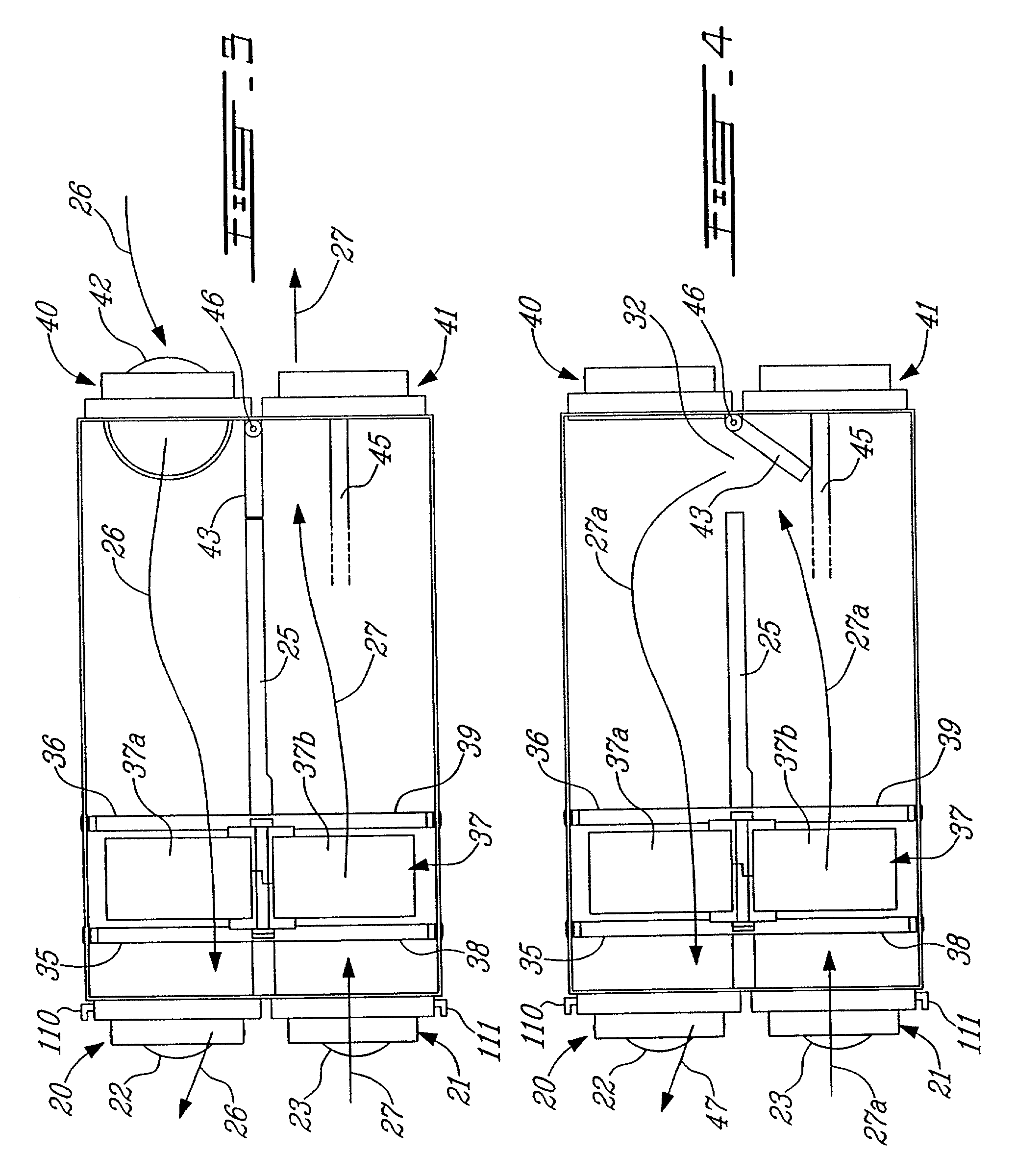Ventilation system
a ventilation system and air technology, applied in ventilation systems, lighting and heating apparatus, heating types, etc., can solve the problems of forming ice (crystals), uncomfortable dry air in the building, and affecting the comfort of use,
- Summary
- Abstract
- Description
- Claims
- Application Information
AI Technical Summary
Benefits of technology
Problems solved by technology
Method used
Image
Examples
Embodiment Construction
[0182]FIG. 1 shows a ventilation apparatus of the present invention which includes both a defrost means and air flow balancing means.
[0183]The apparatus shown in FIG. 1 includes a cabinet indicated generally by the reference number 1. The cabinet 1 is preferably provided with insulated walls and partition wall members.
[0184]The cabinet 1 has a top outer wall 2 and a front door 3. The door 3 is of composite construct comprising a sheet metal outer element 4 and an inner element 5. The inner element 5 is of sheet foam material and is sized to cover the entire inner surface of the element 4. The foam element 5 acts to provide an airtight seal for the door along its periphery adjacent the other walls of the cabinet; element 5 also acts as a heat insolation member. Although not shown, the door may be hingedly attached to hinge members and may be kept shut for example by snap locking members which cooperate with members on the door; see for example U.S. Pat. No. 5,193,610.
[0185]The cabine...
PUM
 Login to View More
Login to View More Abstract
Description
Claims
Application Information
 Login to View More
Login to View More - R&D
- Intellectual Property
- Life Sciences
- Materials
- Tech Scout
- Unparalleled Data Quality
- Higher Quality Content
- 60% Fewer Hallucinations
Browse by: Latest US Patents, China's latest patents, Technical Efficacy Thesaurus, Application Domain, Technology Topic, Popular Technical Reports.
© 2025 PatSnap. All rights reserved.Legal|Privacy policy|Modern Slavery Act Transparency Statement|Sitemap|About US| Contact US: help@patsnap.com



